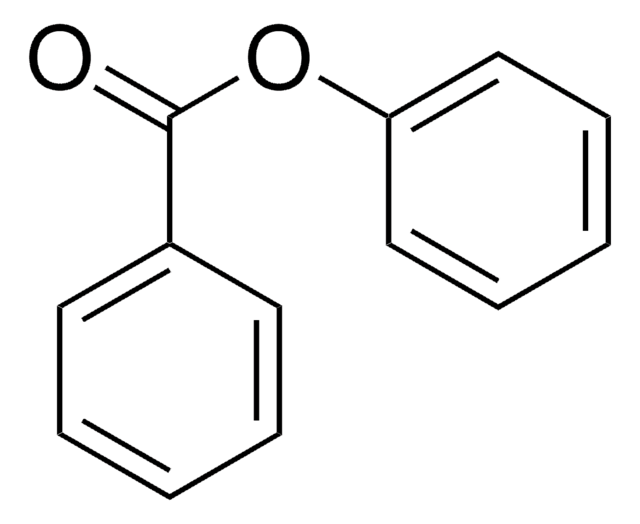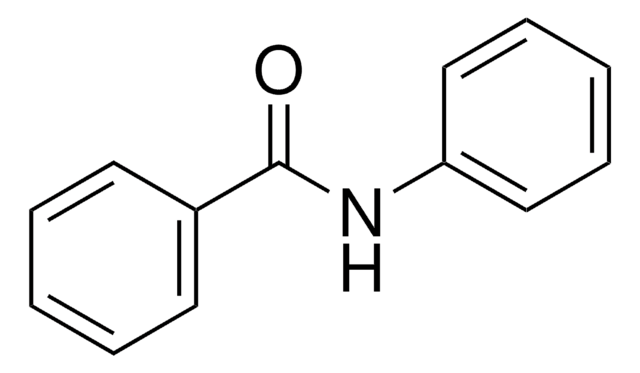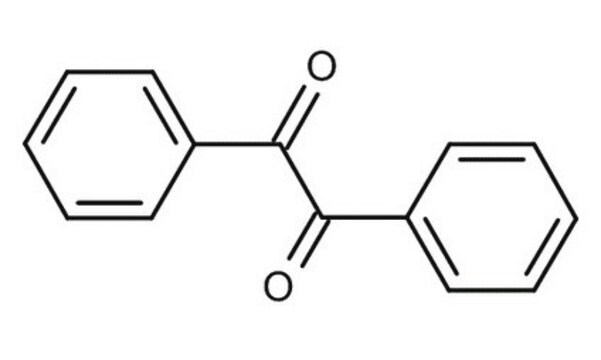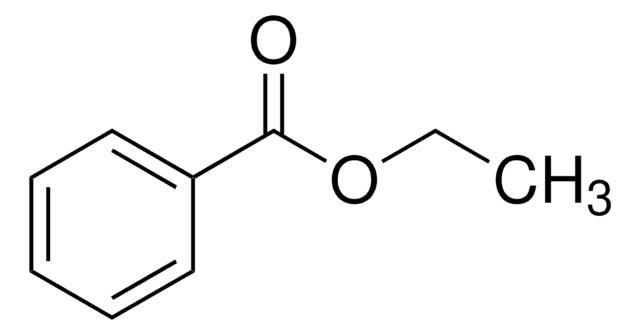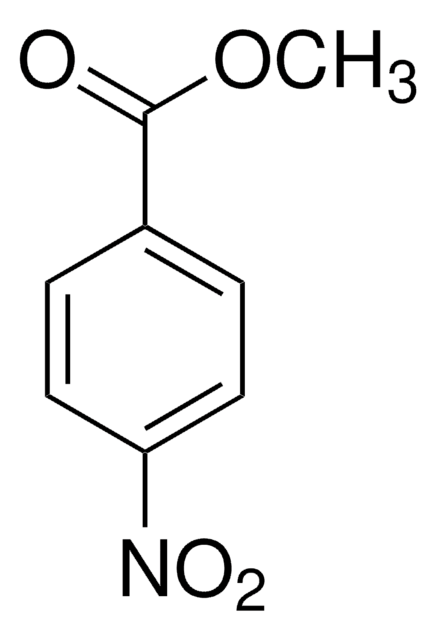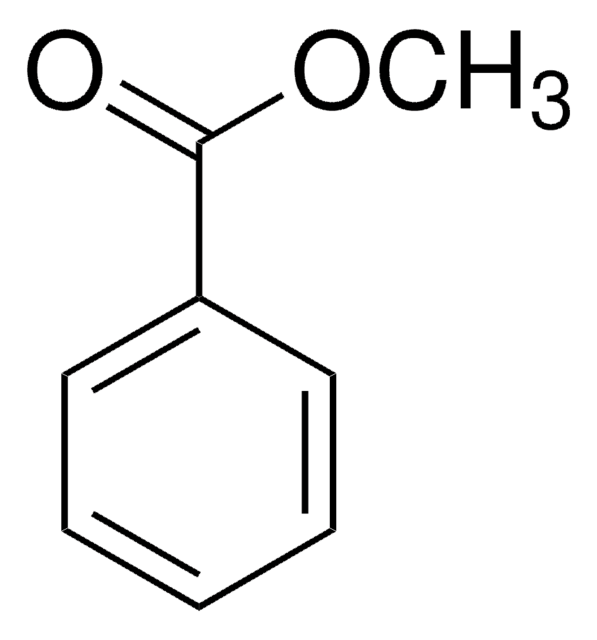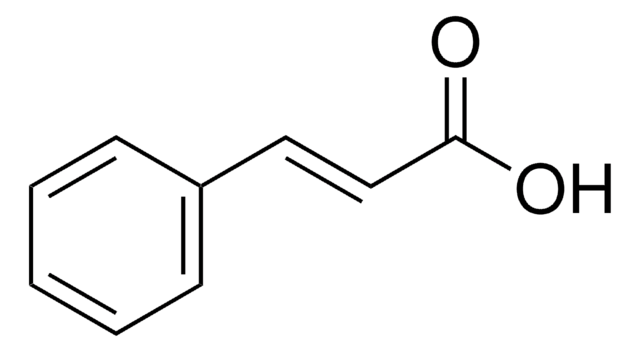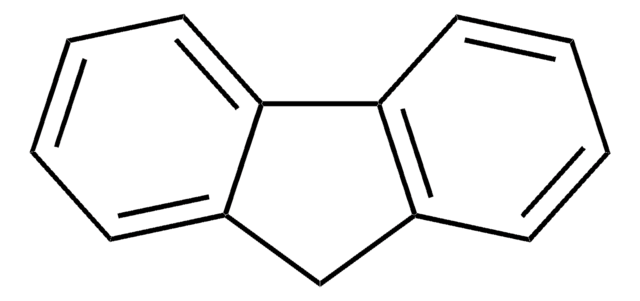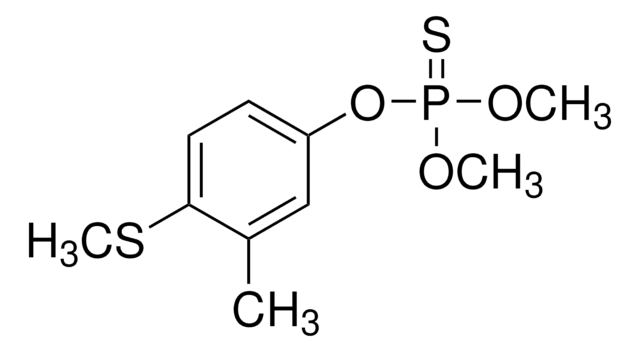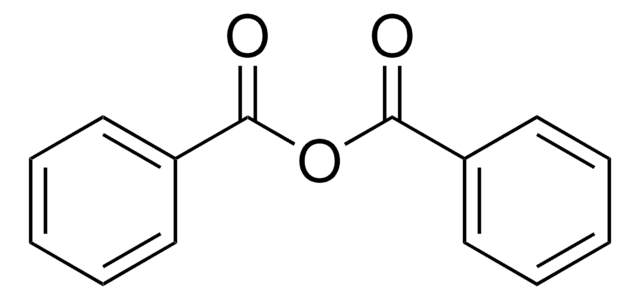142719
Phenyl benzoate
99%
Synonyme(s) :
Benzoic acid phenyl ester
About This Item
Produits recommandés
Niveau de qualité
Essai
99%
Forme
solid
pb
298-299 °C (lit.)
Pf
68-70 °C (lit.)
Solubilité
alcohol: freely soluble (hot)
diethyl ether: slightly soluble
water: insoluble
Groupe fonctionnel
ester
phenoxy
phenyl
Chaîne SMILES
O=C(Oc1ccccc1)c2ccccc2
InChI
1S/C13H10O2/c14-13(11-7-3-1-4-8-11)15-12-9-5-2-6-10-12/h1-10H
Clé InChI
FCJSHPDYVMKCHI-UHFFFAOYSA-N
Vous recherchez des produits similaires ? Visite Guide de comparaison des produits
Catégories apparentées
Description générale
Phenyl benzoate serves as a precursor that undergoes the intramolecular biaryl coupling reaction to produce the intermediate for the synthesis of (−)-steganone.
Application
Mention d'avertissement
Warning
Mentions de danger
Conseils de prudence
Classification des risques
Acute Tox. 4 Oral - Skin Irrit. 2
Code de la classe de stockage
11 - Combustible Solids
Classe de danger pour l'eau (WGK)
WGK 3
Point d'éclair (°F)
Not applicable
Point d'éclair (°C)
Not applicable
Équipement de protection individuelle
dust mask type N95 (US), Eyeshields, Gloves
Faites votre choix parmi les versions les plus récentes :
Déjà en possession de ce produit ?
Retrouvez la documentation relative aux produits que vous avez récemment achetés dans la Bibliothèque de documents.
Les clients ont également consulté
Articles
The Fries rearrangement reaction is an organic name reaction which involves the conversion of phenolic esters into hydroxyaryl ketones on heating in the presence of a catalyst. Suitable catalysts for this reaction are Brønsted or Lewis acids such as HF, AlCl3, BF3, TiCl4, or SnCl4. The Fries rearrangement reaction is an ortho, para-selective reaction, and is used in the preparation of acyl phenols. This organic reaction has been named after German chemist Karl Theophil Fries.
Notre équipe de scientifiques dispose d'une expérience dans tous les secteurs de la recherche, notamment en sciences de la vie, science des matériaux, synthèse chimique, chromatographie, analyse et dans de nombreux autres domaines..
Contacter notre Service technique